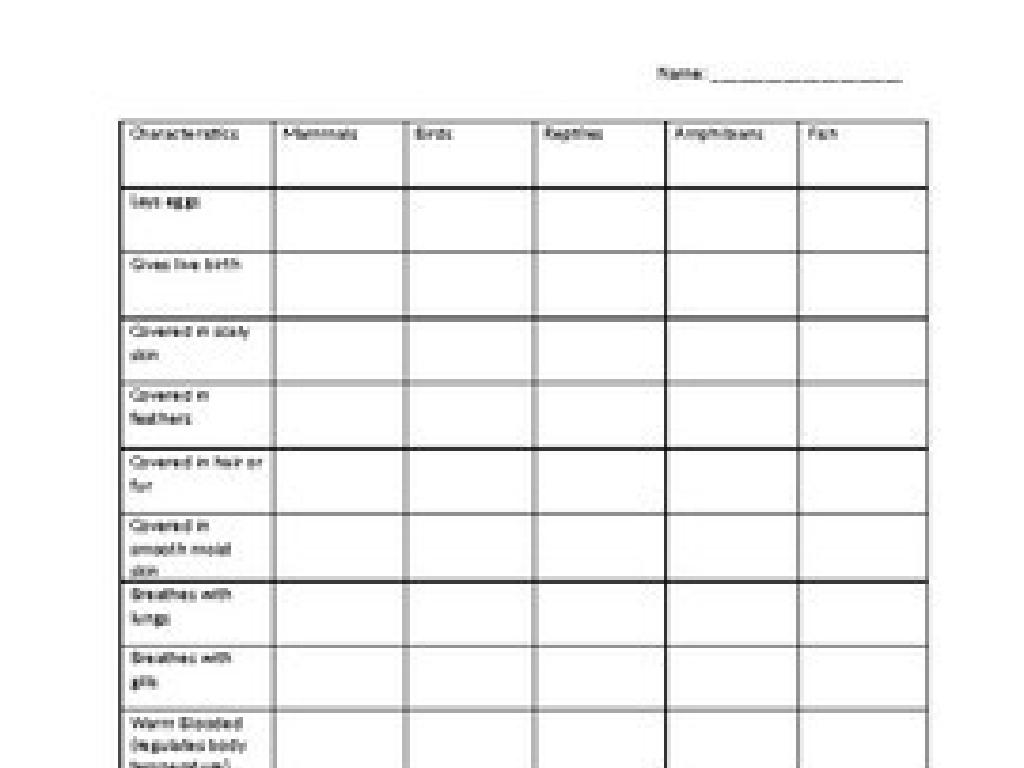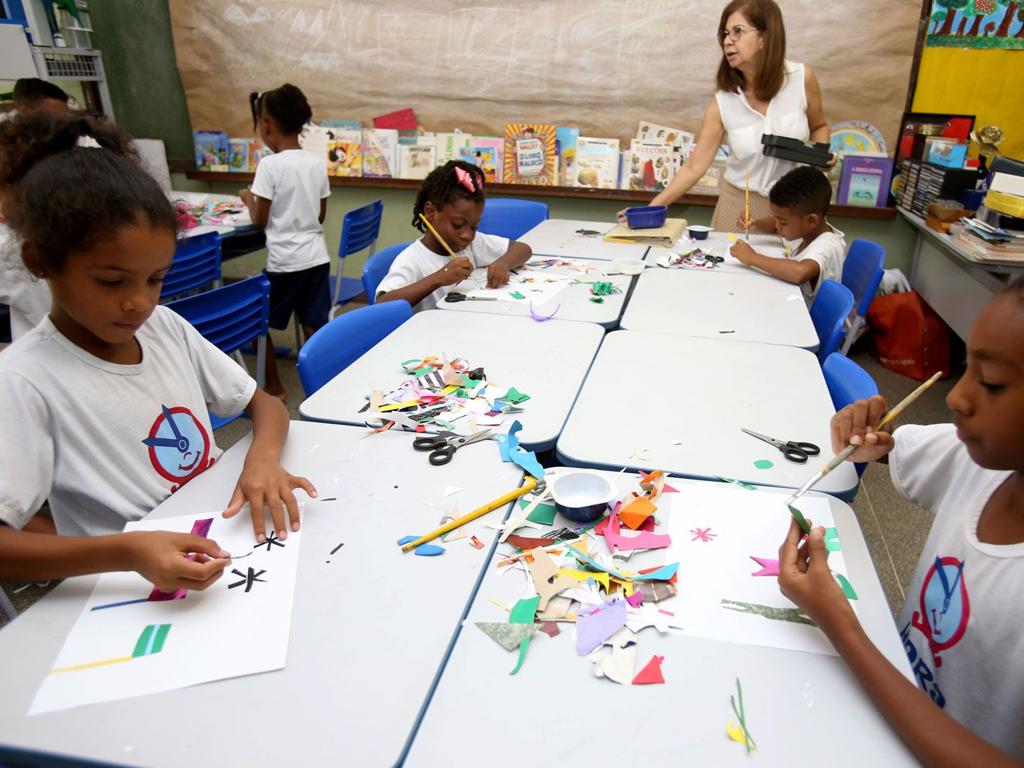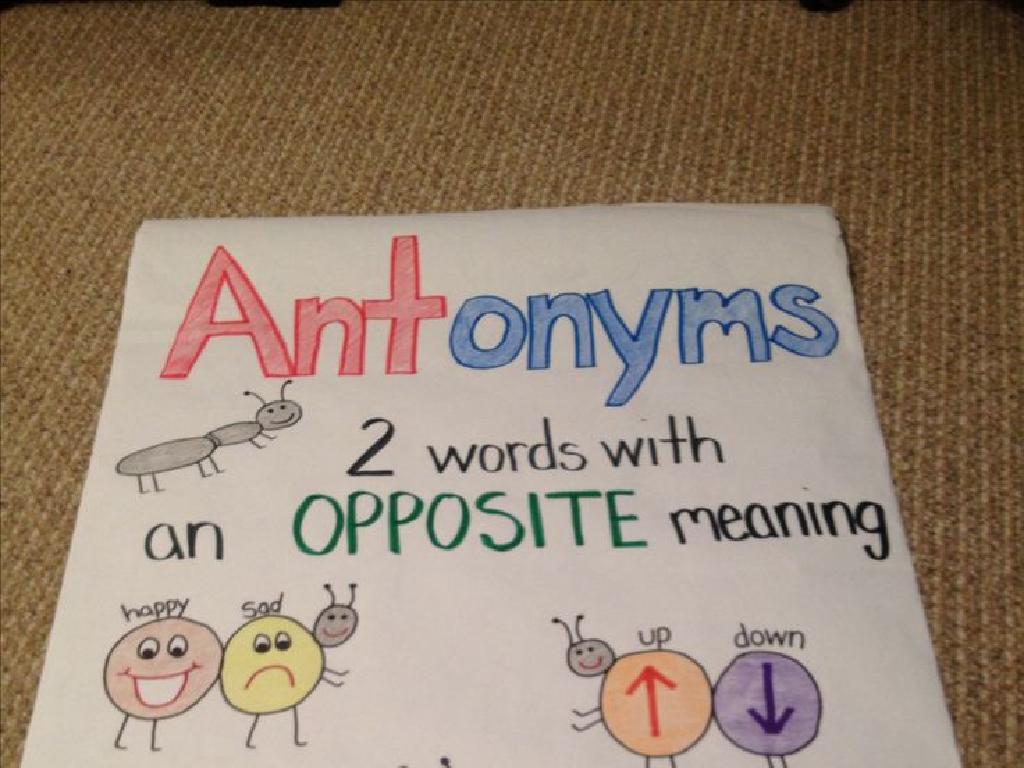Identify Shapes Traced From Solids
Subject: Math
Grade: First grade
Topic: Three-Dimensional Shapes
Please LOG IN to download the presentation. Access is available to registered users only.
View More Content
Welcome to 3D Shapes!
– Greeting First Graders!
– Discover 3D shapes in our world
– Look around to find cubes, spheres, and cones
– Understanding 3D shapes
– 3D shapes have length, width, and height
– Exploring shapes through examples
– For example, a ball is a sphere, and a dice is a cube
|
This slide is an introduction for first graders to the concept of three-dimensional shapes. Start the lesson with a warm welcome and an engaging question about the shapes they see around them. Explain that unlike flat shapes, 3D shapes have three dimensions. Use relatable examples like a ball to explain a sphere and a dice to explain a cube. Encourage the students to touch and feel different objects to understand their shape. The goal is to make them curious about the 3D shapes that make up their environment and to recognize these shapes in everyday objects.
Exploring 3D Shapes
– 3D shapes have three dimensions
– Like a toy block, a ball, a can, and a party hat
– Examples: cube, sphere, cylinder
– 3D shapes can be touched
– They are not flat; they take up space
– They have length, width, and height
– These dimensions give 3D shapes a solid form
|
This slide introduces first graders to the concept of three-dimensional shapes. Emphasize that unlike flat shapes, 3D shapes have depth, which allows them to be picked up and held. Use tangible examples like a block (cube), a ball (sphere), a can (cylinder), and a party hat (cone) to help students visualize and understand these concepts. Encourage students to explore their surroundings and identify objects that match the shapes discussed. This will help them recognize 3D shapes in their daily environment and understand their properties.
Exploring 3D Shapes Around Us
– 3D shapes are everywhere
– Look around, can you spot any 3D shapes?
– A dice is a cube
– Cubes have 6 equal square faces
– A ball is a sphere
– Spheres are perfectly round, like a basketball
|
This slide is aimed at helping first graders recognize and identify 3D shapes by relating them to familiar objects. Start by explaining that 3D shapes have length, width, and height. Show them a dice and explain that it is in the shape of a cube, pointing out its equal square faces and edges. Then, show them a ball and explain that it is a sphere, emphasizing its round shape. Encourage the students to think of other objects that resemble these shapes. The goal is to help them understand these concepts by visualizing and touching real-life objects that are shaped like cubes and spheres.
Tracing 3D Shapes to See 2D Outlines
– Tracing shows a 3D shape’s outline
– A cube’s outline is a square
– Like drawing a box’s shadow on paper
– We’ll trace different 3D shapes
– Use objects like blocks and balls
– Discover shapes within 3D figures
– Find circles, rectangles, and more!
|
This slide introduces students to the concept of tracing 3D shapes to understand their 2D outlines. Emphasize that when we trace the bottom or a side of a 3D shape onto a flat surface, we see a 2D shape. For example, the outline of a cube is a square. During the activity, provide various 3D objects like blocks (cubes), balls (spheres), and cans (cylinders) for students to trace on paper. This will help them recognize that 3D shapes can have different 2D outlines. Encourage the students to discuss the shapes they see and how the 3D shape relates to the 2D outline. This hands-on activity will help solidify their understanding of the relationship between two-dimensional and three-dimensional shapes.
Let’s Practice Tracing 3D Shapes!
– Use objects to trace 3D shapes
– We’ll use everyday items to see shapes
– Trace a can’s bottom for a circle
– Cylinders have circular bases, like cans
– Trace a box’s side for a rectangle
– Cubes have rectangular faces, like boxes
|
This slide is for a class activity aimed at helping first graders identify two-dimensional shapes that are part of three-dimensional objects. Provide a variety of cans and boxes for the students to trace. Demonstrate how to trace the bottom of a can to reveal a circle and the side of a box to show a rectangle. Encourage students to explore and trace different objects. Possible activities include tracing the face of a clock to find a circle, the side of a cereal box for a rectangle, or the end of a roll of tape for another circle. This hands-on activity will help solidify their understanding of how three-dimensional shapes can be broken down into two-dimensional figures.
3D Shape Matching Game
– Match objects to 3D shapes
– Soup can shape match
– A soup can looks like a cylinder
– Party hat shape match
– A party hat is shaped like a cone
– Discuss your matches
|
This slide introduces a matching game to help students identify three-dimensional shapes by relating them to everyday objects. The game will prompt students to think about the shapes of objects they are familiar with, like a soup can and a party hat, and match them to their corresponding 3D shapes, a cylinder, and a cone, respectively. Teachers should prepare cutouts of various 3D shapes and images of the objects for an interactive class activity. Encourage students to discuss why they think each object matches a particular shape, reinforcing their understanding of 3D shapes in a fun and engaging way.
Class Activity: Shape Hunt!
– Let’s go on a Shape Hunt
– Find objects like a cube or sphere
– Match them with cylinder and cone
– Draw the shapes on your worksheet
– Use your worksheet to draw the shapes of objects you find in the classroom.
|
This activity is designed to help students recognize and identify three-dimensional shapes in their environment. Encourage the children to look around the classroom for everyday items that resemble a cube, sphere, cylinder, and cone. Examples could include a dice (cube), a ball (sphere), a can (cylinder), and a party hat (cone). Provide each student with a Shape Hunt worksheet where they can draw the shapes they find. This hands-on activity not only reinforces shape recognition but also enhances their observational skills. For the teacher: prepare a worksheet with the shapes listed and space for drawing, ensure safety during the classroom hunt, and consider having a few objects on hand in case some students have difficulty finding items.
Review and Goodbye!
– Excellent work on Shape Hunt
– Learned tracing shapes from solids
– We traced 2D outlines from 3D objects
– Find 3D shapes at home
– Look for cubes, spheres, and cylinders
– Share your shapes tomorrow
– Bring stories or drawings of your findings
|
Today’s class was a success, and the students did a fantastic job during the Shape Hunt activity. They’ve learned how to trace and identify two-dimensional shapes that come from three-dimensional solids. Encourage them to continue this exploration at home by identifying everyday objects that match the shapes they’ve learned. Ask them to either draw what they find or bring a story to share with the class. This will help reinforce their understanding and recognition of 3D shapes in their environment. Prepare to celebrate their findings in the next class to encourage participation and excitement.


/postwar_america_transformation.jpg)



